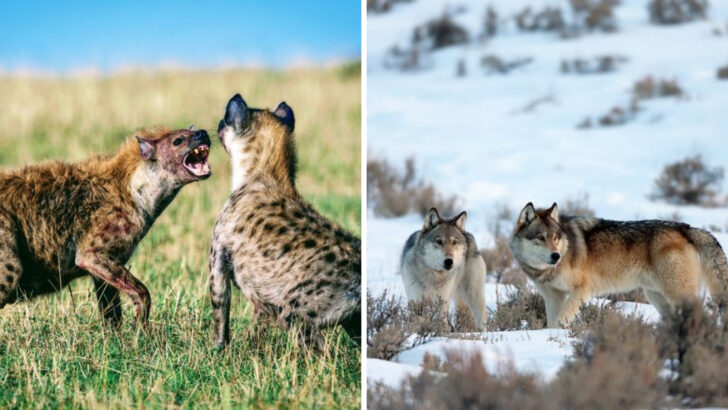One howls at the moon. The other laughs in its face.
The grey wolf and the spotted hyena aren’t just two top-tier predators—they’re survival specialists shaped by fire and fang.
They don’t back down.
They don’t play nice.
And when it comes to strength, strategy, and savage smarts, it’s a brutal battle of beast vs beast.
Wolves run tight formations, like military units with fur and fangs.
Hyenas? They’re chaos engineers—bold, relentless, and shockingly clever.
They’ll steal your food, your pride, and maybe even your life.
So who wins when these two clash?
The icy tactician of the north or the bone-crushing brute of the savannah?
Let’s break it down, fact by jaw-dropping fact.
You might think you know the answer—but one of these predators is full of wild surprises.
Social Structure
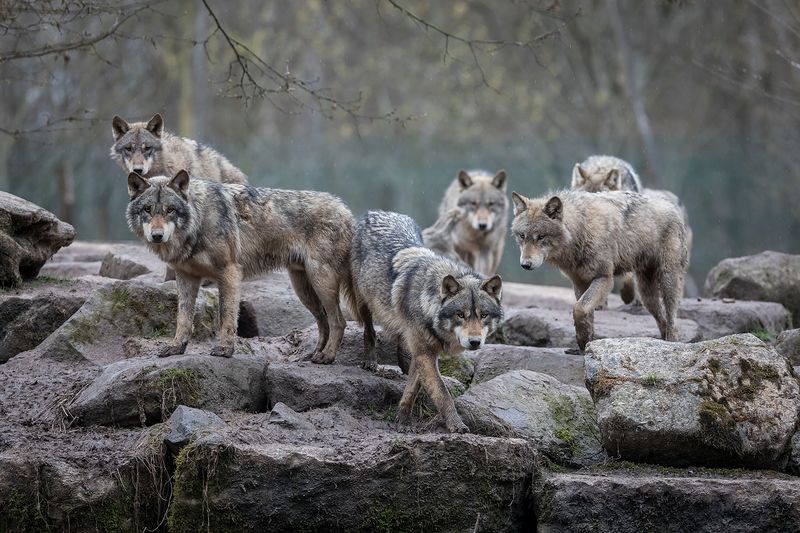
A Grey Wolf is never alone; it thrives in packs with a robust social hierarchy. Each member has a role, ensuring survival and success in harsh environments. In contrast, the Spotted Hyena lives in clans dominated by females. This matriarchal society is both fascinating and complex. Hyenas utilize their group strength for hunting and protection. Despite differences, both species exhibit cooperation, essential for thriving in the wild. Their social dynamics reveal adaptability and intelligence. Understanding their societal interactions gives insight into their behavioral strategies and survival mechanisms.
Hunting Techniques
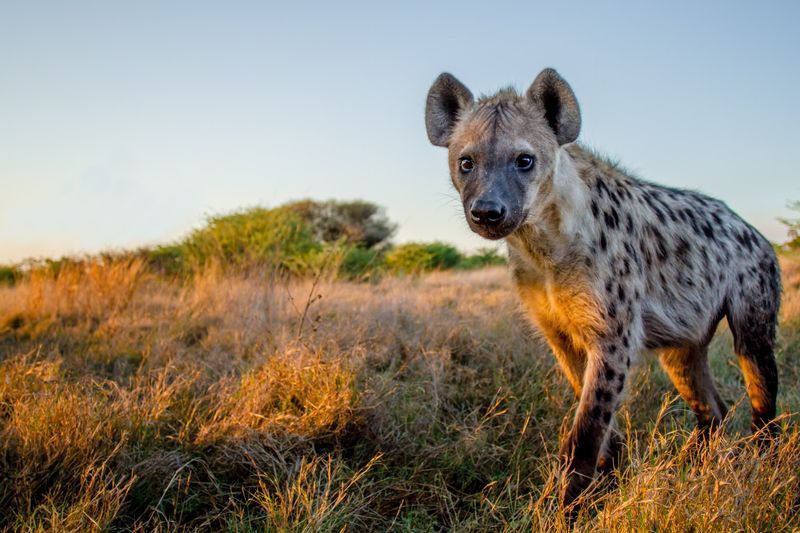
In the silent woods, Grey Wolves hunt with precision and teamwork, often targeting large prey like deer. Their chase is relentless, relying on stamina and strategy. Meanwhile, Spotted Hyenas employ cunning tactics on the African plains. They often scavenge but are also capable hunters, pursuing wildebeest with remarkable endurance. Their powerful jaws make them formidable adversaries. Each species has evolved unique methods to secure food, showcasing their adaptability. These hunting techniques highlight their roles as apex predators in different landscapes, where survival often depends on skill and cooperation.
Physical Attributes
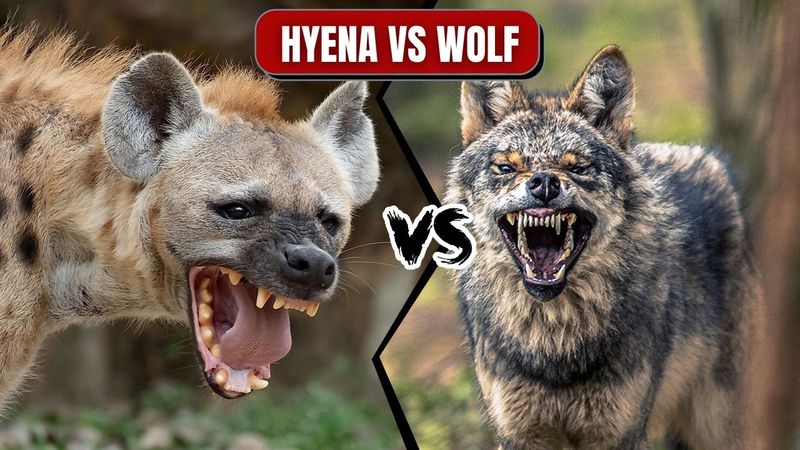
The Grey Wolf’s piercing eyes and dense fur provide insulation against cold climates, while its agile build aids in swift pursuits. Its majestic presence is undeniable. On the other hand, the Spotted Hyena boasts a robust physique, with powerful jaws capable of crushing bones. This physical strength is crucial for its scavenging lifestyle. The hyena’s spotted coat offers camouflage in the savanna. Each attribute plays a pivotal role in their survival, illustrating nature’s ingenuity. Their physical characteristics are more than just appearances; they are key to their predatory success.
Vocal Communications
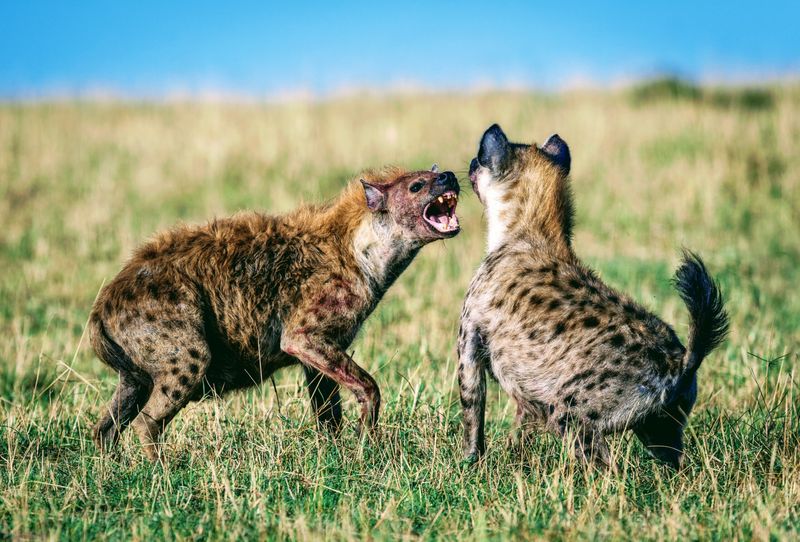
A haunting howl echoes through the night as the Grey Wolf communicates with its pack. This vocalization is not just a call; it’s a connection. Wolves convey emotions and locations through diverse sounds. Conversely, the Spotted Hyena is famous for its “laugh,” a sound that signifies social status and emotional state. These vocal adaptations are vital for interaction within their respective groups. Both species showcase a complex auditory world, where sounds are more than noise—they are integral to their social structure. Their calls resonate with power and mystery.
Habitat Range
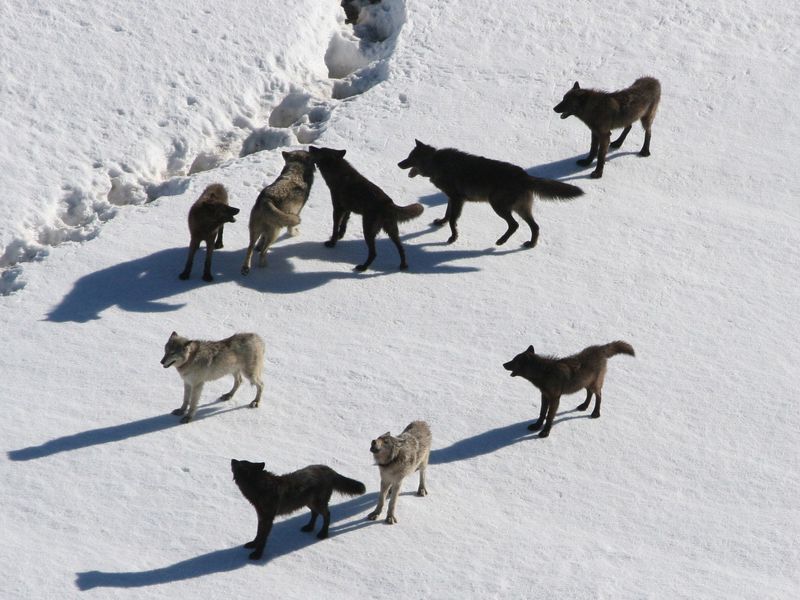
Grey Wolves roam the vast wilderness, from North America’s forests to Eurasian tundras. Their adaptability allows them to thrive in diverse climates. In contrast, Spotted Hyenas inhabit the African savannas and grasslands, where they are well-suited to the warm environment. Each species has carved a niche in its preferred landscape, highlighting their ecological roles. Understanding their habitats reveals how they interact with the environment and other species. These habitats are not merely homes but arenas where the drama of life unfolds, showcasing the dynamic nature of their existence.
Dietary Preferences
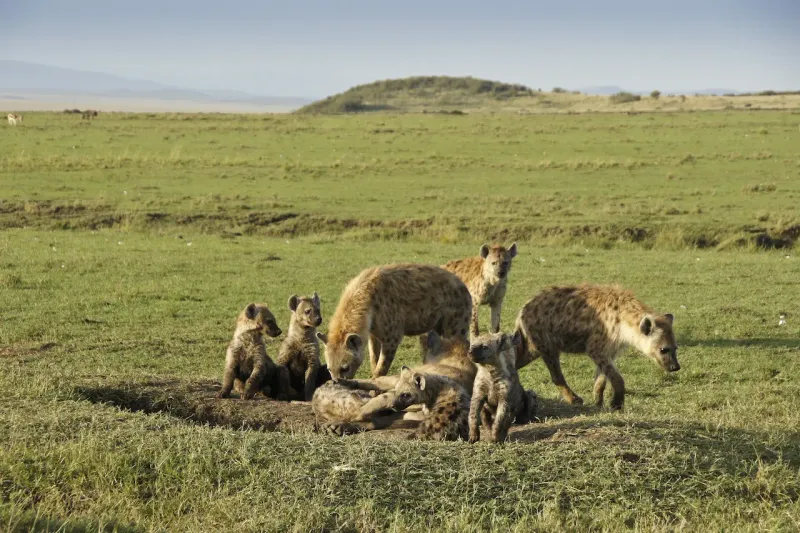
The Grey Wolf is a carnivorous predator, feasting on deer, elk, and small mammals. Their diet reflects their role as skilled hunters. Meanwhile, Spotted Hyenas are opportunistic feeders, consuming carrion and hunting live prey like gazelles. Their powerful digestive systems allow them to extract nutrients efficiently, even from bones. Both species have diets that are adapted to their environments and social structures. These dietary habits are more than mere sustenance; they are reflections of their ecological importance. Their feeding rituals depict a balance between predation and scavenging.
Reproductive Behavior
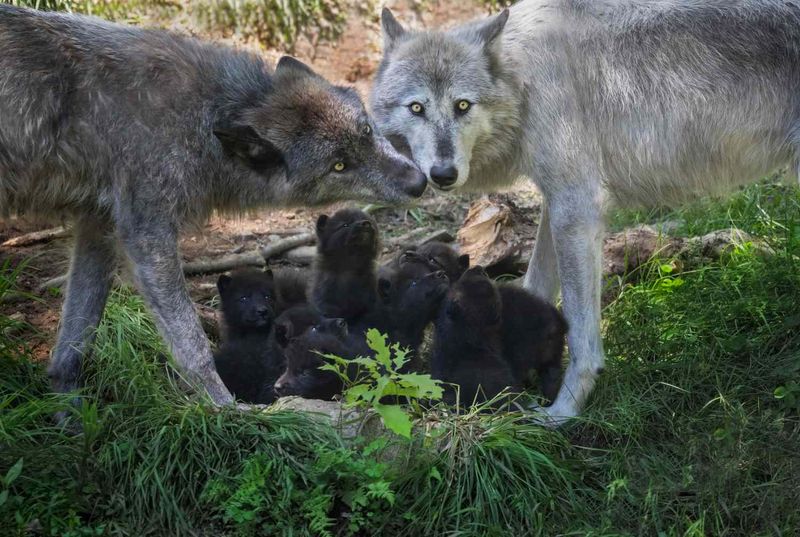
In the secluded dens, Grey Wolf pups are born, nurtured by both parents and the pack. Their upbringing is a community effort, ensuring survival in the wild. Spotted Hyenas, on the other hand, have cubs in communal dens, with a unique maternal hierarchy where dominance influences cub survival. The hyena cubs’ playful interactions are a crucial part of their social development. These reproductive behaviors highlight the investment each species makes in their offspring. Through these practices, they ensure the continuity of their lineage, reflecting the intricacies of their life cycles.
Lifespan and Longevity
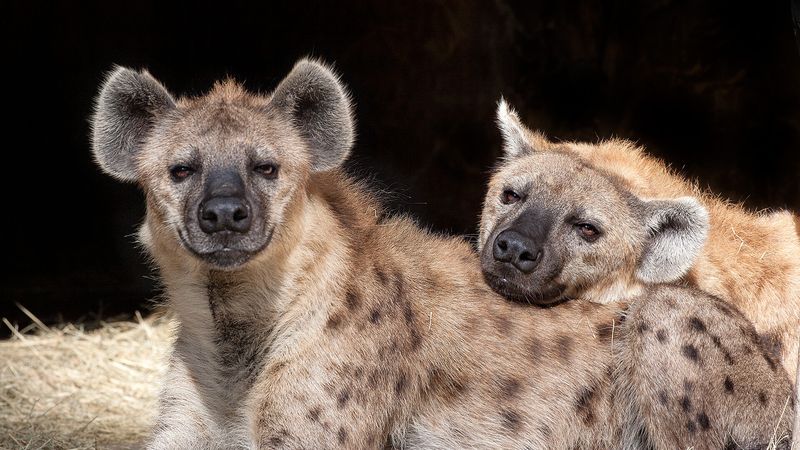
The life of a Grey Wolf can span up to a decade in the wild, with each year marked by the changing seasons and pack dynamics. Their longevity is influenced by environmental challenges and human interactions. In contrast, Spotted Hyenas can live over 20 years, benefiting from social cooperation and adaptability. Their longer lifespan allows them to play prolonged roles within their clans. Both species’ lifespans are reflections of their survival strategies, showcasing resilience and adaptation to their respective worlds. Longevity is not just a number; it’s a testament to their enduring presence.
Intelligence and Problem Solving

The Grey Wolf’s intelligence is demonstrated through its strategic hunting and social problem-solving. They exhibit remarkable coordination and planning within their packs. Spotted Hyenas, with their large brains, are equally intelligent, known for their innovative feeding techniques and problem-solving abilities. They have been observed using tools, showcasing adaptability and intellect. Such cognitive skills are vital for navigating complex environments. Intelligence in these animals goes beyond instinct; it represents a sophisticated understanding of their world. Their problem-solving prowess highlights their evolutionary success in diverse ecological niches.
Conservation Status

The Grey Wolf has faced significant threats from habitat loss and hunting, leading to conservation efforts across various regions. Protected areas and legal protections have been established to safeguard their populations. Spotted Hyenas, although not endangered, face habitat encroachment and human conflict. Conservation strategies focus on co-existence and habitat preservation. Both species’ statuses highlight the importance of wildlife conservation and the challenges faced in balancing human development and ecological integrity. Their conservation stories are reminders of the fragility and resilience of nature. Protecting them ensures biodiversity and ecological balance.
Cultural Significance
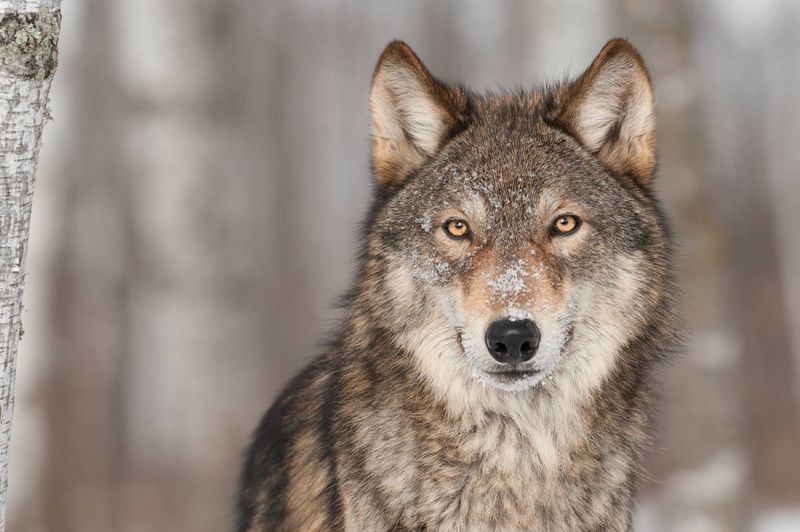
The Grey Wolf holds a prominent place in folklore and mythology, symbolizing wildness and mystery. Across cultures, it is both revered and feared, embodying duality. Meanwhile, the Spotted Hyena has a complex role in African culture, often misunderstood but respected for its survival prowess. Its depiction ranges from folklore to modern interpretations, reflecting societal views. These cultural significances highlight the deep connections between humans and predators. They are more than animals; they are woven into the fabric of human history and storytelling. Their cultural narratives echo through time, shaping perceptions and beliefs.
Adaptations to Environment
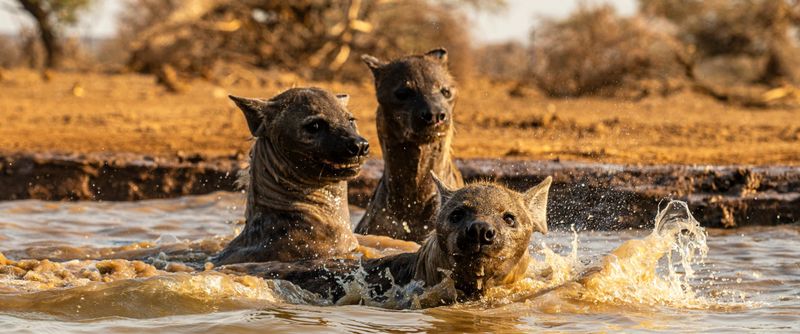
Surviving harsh winters, the Grey Wolf is a master of adaptation, with its thick fur and keen senses. These adaptations enable it to hunt effectively and maintain its territory. Spotted Hyenas, in the sun-baked savannas, rely on their endurance and social structure to thrive. Their behaviors and physical traits are tailored to their challenging environments, showcasing resilience and versatility. Adaptations in these predators are not merely biological; they are strategies for existence. They reveal the dynamic interplay between organism and habitat, highlighting the relentless pursuit of survival in the natural world.
Inter-Species Interactions
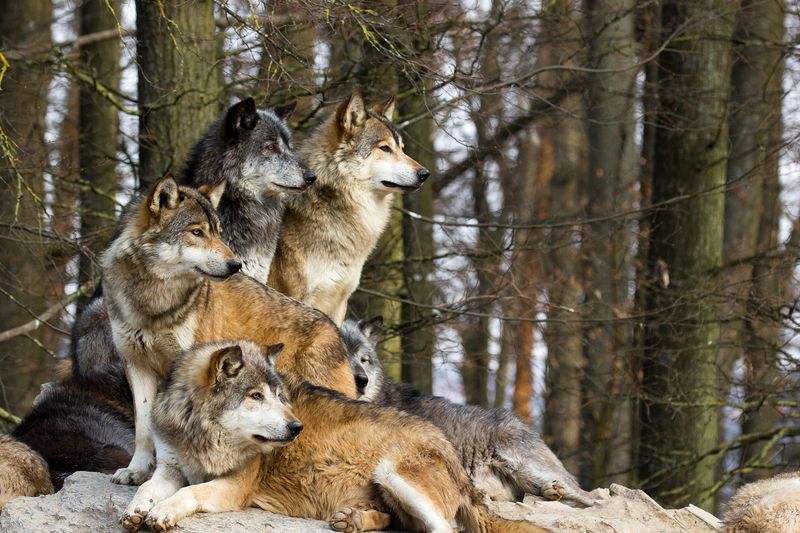
In the wild, the Grey Wolf engages in complex interactions with prey and other predators, often establishing dominance over its territory. Such interactions are vital for maintaining ecological balance. Spotted Hyenas are known for their competitive yet sometimes cooperative relationship with lions. These interactions reveal the intricate dynamics of predator communities. Understanding these relationships offers insight into the ecological roles each species plays. Inter-species interactions are more than survival tactics; they are expressions of evolutionary strategies. They illustrate the interconnectedness of life forms within ecosystems, where every encounter shapes existence.
Myth vs. Reality
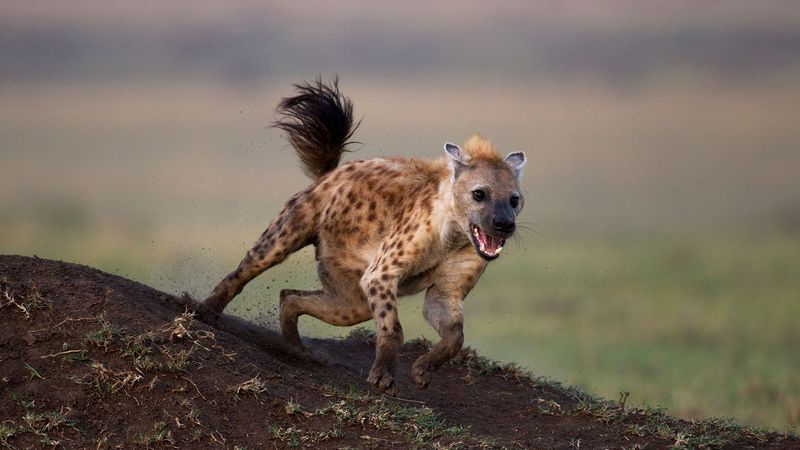
Legends often portray the Grey Wolf as a cunning and fearsome creature, yet reality paints a more nuanced picture. These wolves are complex, socially intelligent animals. Similarly, the Spotted Hyena’s infamous “laugh” is steeped in myth, often overshadowing its true nature as a resourceful survivor. Myths and realities intertwine, shaping perceptions and attitudes. Exploring these narratives reveals the contrast between human imagination and animal truth. Understanding these distinctions enriches our appreciation of wildlife. The myths and realities of these predators offer a window into the enduring interplay between cultural stories and natural behaviors.

